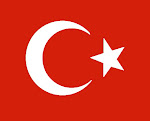Zvulun, Ravid. (1960).The Yishuv in Palestine in the 19th Century as Reflected in its Hebrew Literature. (in the Library: DS 125 .R37x 1976.)
"The early settlements in Palestine have been studied and described in great detail from different points of view: economic, sociological, cultural, and religious. All this literature was written by "outsiders" and "onlookers" not by active participants. However, there has been no research in the Hebrew literature of this period created in Palestine itself as a reflection of the life of early settlers and their own comments on their experience"(1). This is from the dissertation's introduction; the actual text is written in Hebrew...
The rest of the introduction seems a little bias, but I wanted to share this information with my classmates, since we just talked about this concept yesterday, during our final class period.
I'm wondering if an author who is not an onlooker/outsider has anything interesting to write about. What do you write about if you're not critiquing a social order, idea, or status quo?
13 years ago




